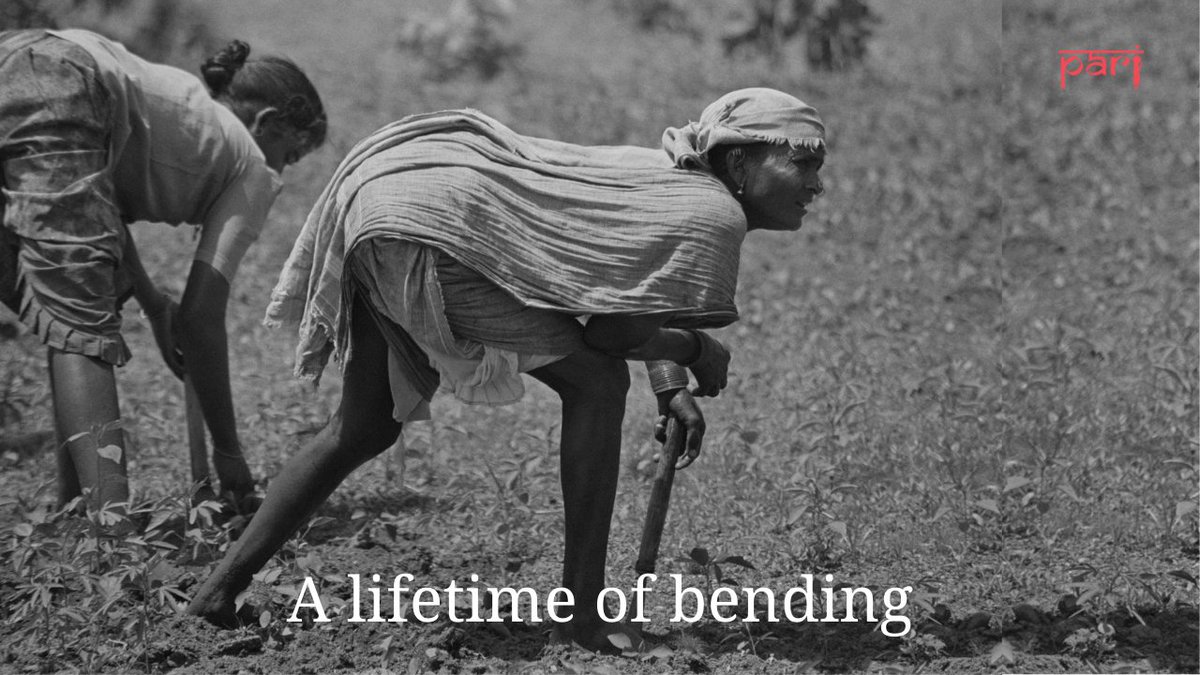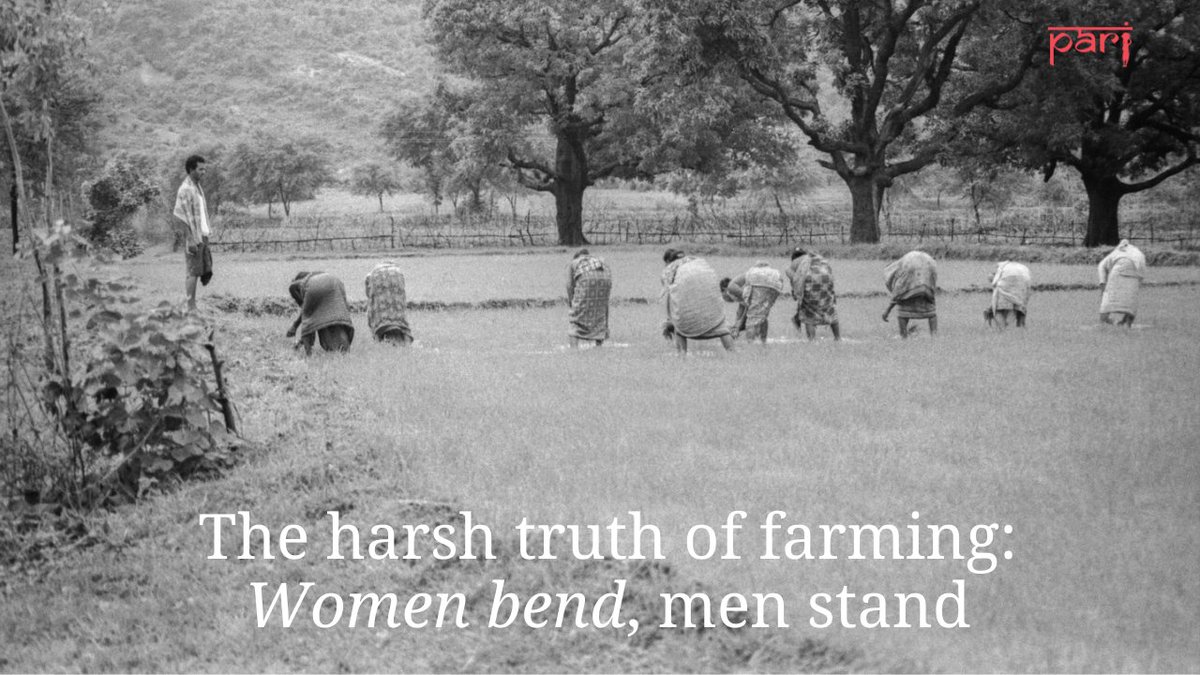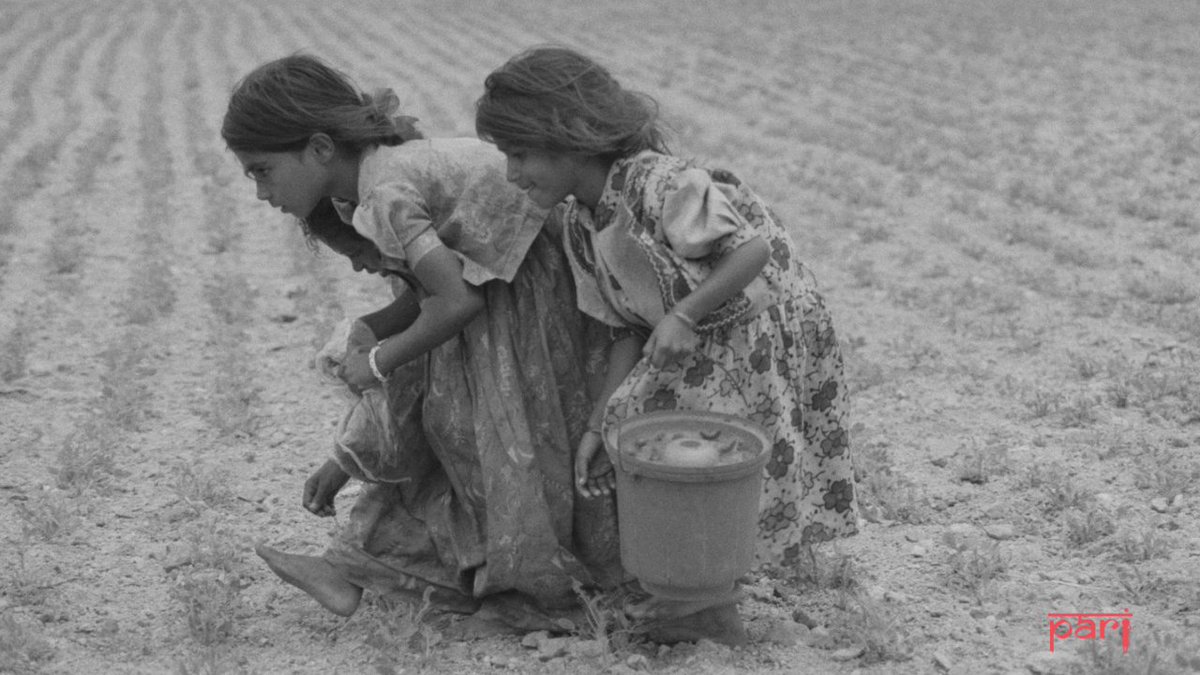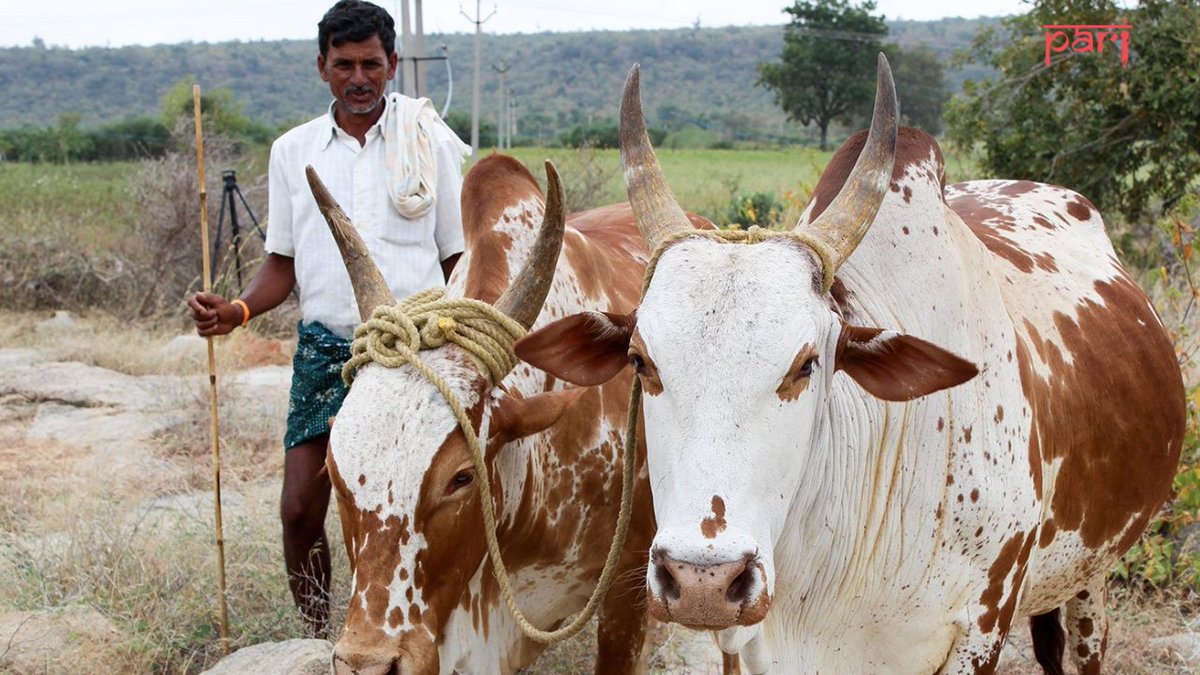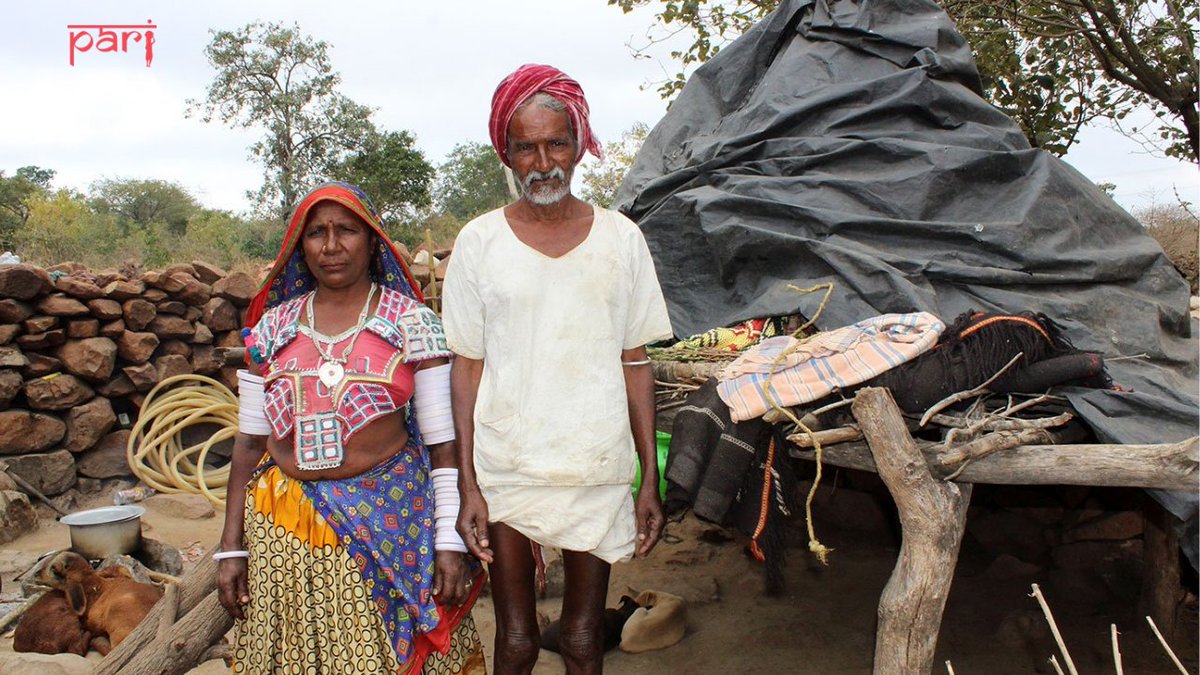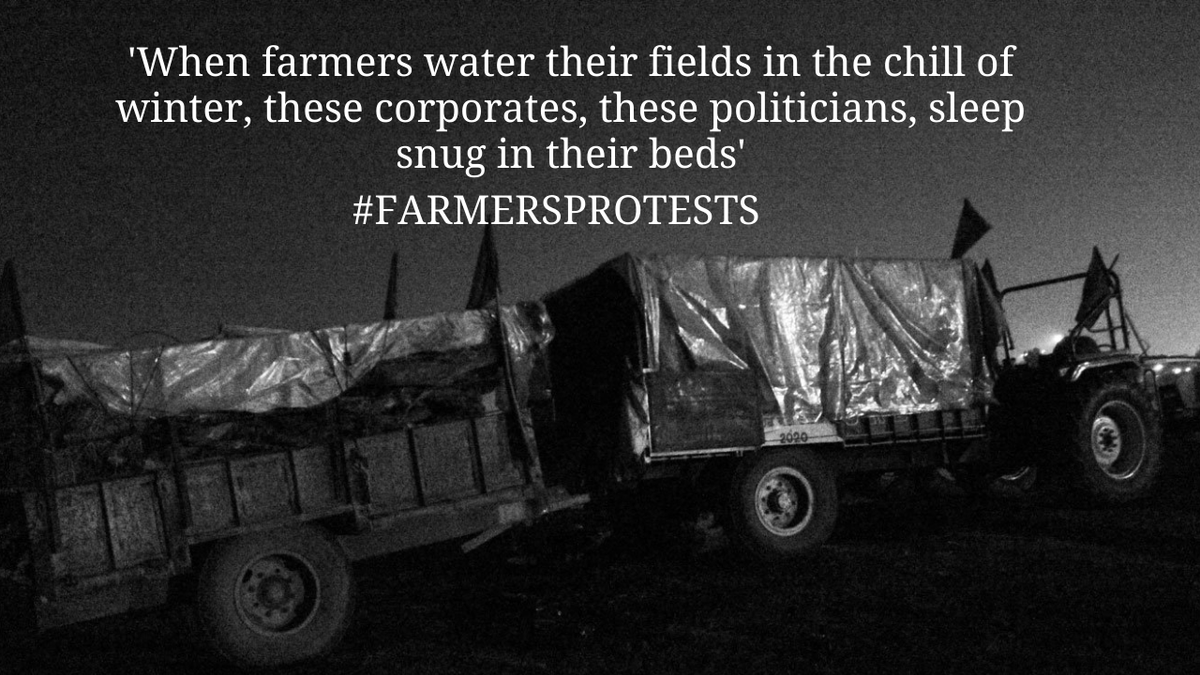
Once a sweeper with the BMC, Balappa Dhotre prefers to call himself a ‘karigar’– he has been chiselling stone grinders for decades, sitting on Mumbai's streets – though there are few takers now for his chutney crushers.
[Photo Thread]
ruralindiaonline.org/en/articles/ba…
[Photo Thread]
ruralindiaonline.org/en/articles/ba…

At the corners of busy suburban roads, he sets up ‘shop'. His customers are mainly people who can not afford an electric grinder, or want to showcase the old-style mortar-pestle in their homes, or prefer the taste the stone gives to food. 2/n 

Balappa brought along to the big city his father’s and grandfather’s auzaar (implements) to make the grinders. The only raw material he needed is the black stone. He procures it from the city’s construction sites. 3/n 

When they first came to Mumbai, Balappa's wife Nagubai (left, with their son Ashok, his wife Kajal, and their kids) went with him to sell the mortar-pestles. Over time, the demand for the stone grinders started falling. He began work odd jobs on film sets. 4/n 

He stayed in Lower Parel, Bandra, Andheri – depending on where his work would take him. He retired from the BMC as a sweeper in 2011, but he prefers to describe himself as a ‘karigar’, a craftsman. The stone-work has for long been his family occupation. 5/n 

He continues to make stone grinders even though there the number of buyers keeps dwindling. “My father and grandfather used to do it; this is who I am,” he says. Adds Nagubai, "He likes to do this, and even I like it that the boodha [old man] is [still] doing some work." [fin] 

• • •
Missing some Tweet in this thread? You can try to
force a refresh




